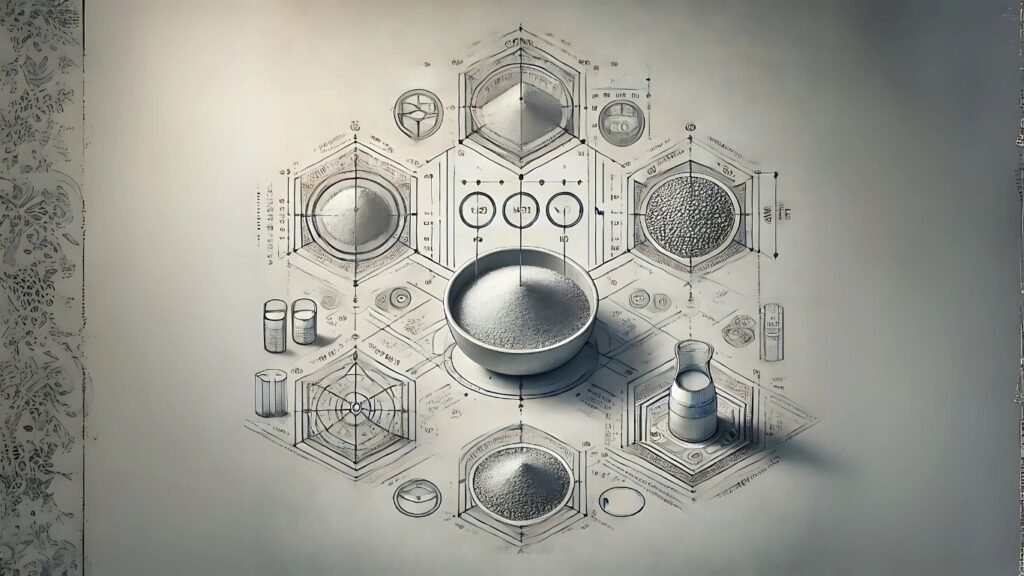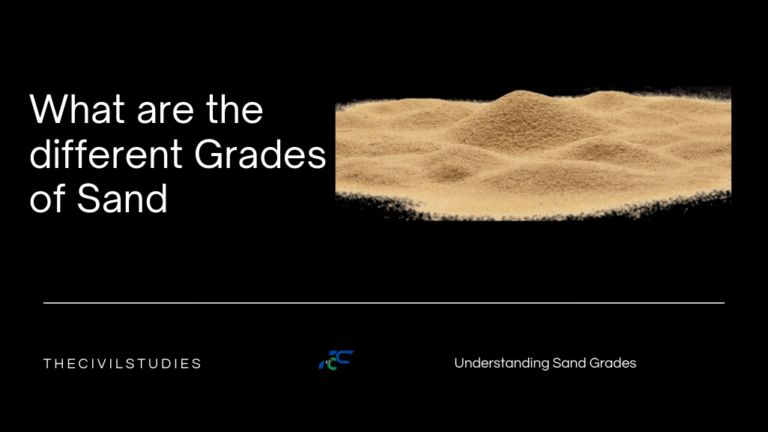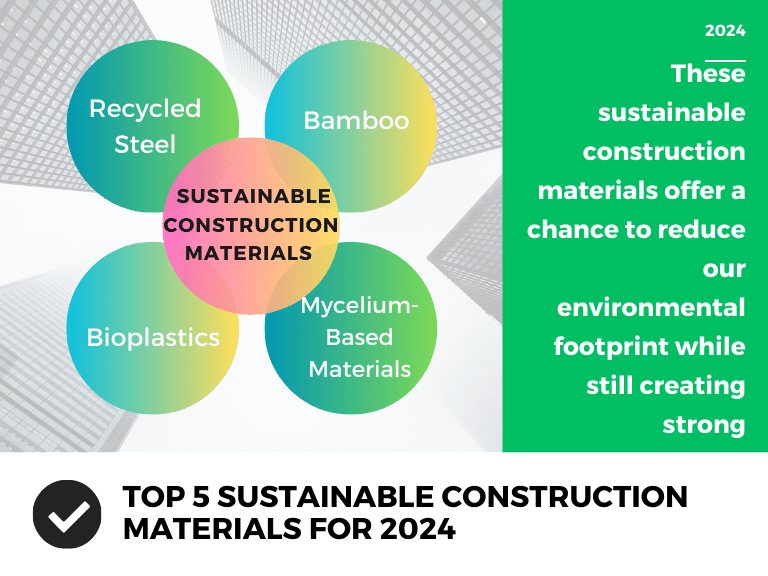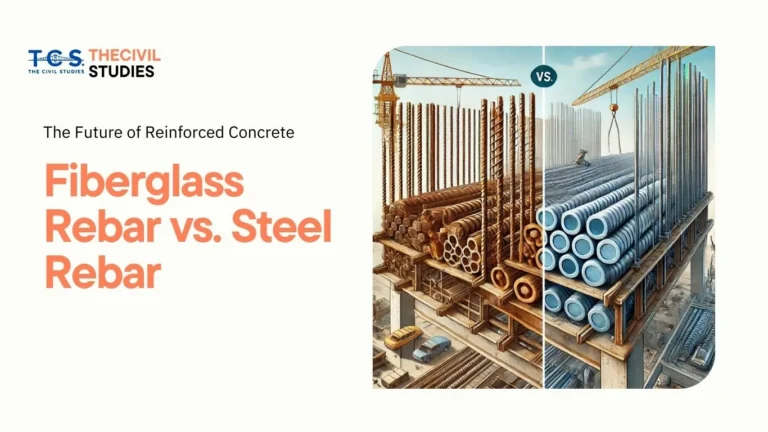Concrete grades (M5 to M40) specify the 28-day compressive strength (in MPa) and use different mix proportions of cement, sand, and aggregates. Nominal mixes (fixed cement: sand: aggregate ratios) are prescribed for Grades M5 up to M20, while design mixes (calculated proportions per IS 10262:2019) are required for higher grades (M25 and above). Each mix must balance strength, workability, durability, and cost for its intended application. For example, lean mixes like M5–M10 are used for non-structural leveling or flooring, whereas high-strength mixes (M30–M40) serve in columns, beams, bridges, and heavy foundations
Concrete is often delivered as ready-mixed batches and poured on site to ensure consistent quality. Each batch must be tailored for its application: lean mixes like M5 (~5 MPa) are used for leveling or fill, while high-strength mixes like M40 (~40 MPa) support heavy structural elements. According to IS 456:2000, fixed nominal proportions are used up to M20; higher grades (M25–M40) require full mix design under IS 10262:2019. Table 1 and 2 below summarize typical mix ratios, strengths, and uses for concrete grades M5 through M40.
| Grade | Mix Ratio (Cement : Sand : Coarse Agg.) | Strength (28d) | Typical Uses |
| M5 | 1 : 5 : 10 (nominal) | 5 MPa | Non-structural fill, leveling |
| M7.5 | 1 : 4 : 8 (nominal) | 7.5 MPa | Fill, simple flooring |
| M10 | 1 : 3 : 6 (nominal) | 10 MPa | Light pathways, small slabs |
| M15 | 1 : 2 : 4 (nominal) | 15 MPa | Residential building floors/slabs |
| M20 | 1 : 1.5 : 3 (nominal) | 20 MPa | RCC slabs, beams, columns (moderate exposure) |
| M25 | ~1 : 1 : 2 (design) | 25 MPa | Heavy footings, beams, slabs |
| M30 | ~1 : 0.75 : 1.5 (design) | 30 MPa | High-load structural elements (bridges, columns) |
| M35 | Design mix (approx. 1 : 0.6 : 1.2) | 35 MPa | Tall buildings, critical structures |
| M40 | Design mix (approx. 1 : 0.5 : 1) | 40 MPa | Prestressed members, heavy-duty slabs |
Table 1: Typical nominal and design mix ratios, strengths, and applications for concrete grades M5–M40 (by IS 456:2000/IS 10262:2019 and industry practice).
Concrete mix ratios above show cement : sand : coarse aggregate by volume. (Design mixes for M25+ are calculated per site materials and may vary.)
For example, “M20 concrete ratio equals 1:1.5:3” and “M25 concrete ratio … 1:1:2”. These ratios ensure the target mean strength is met.
(IS 10262:2019 uses formula:
f target =f ck +1.65×σ
fck: Characteristic strength of concrete (in MPa)
σ: Standard deviation (depends on quality control level)
1.65: Factor for 5% probability of failure (as per IS codes)
IMPORTANT NOTE:
IS 456 Table 5 prescribes minimum cement content and maximum water-cement (W/C) ratio for durability:
e.g. for moderate exposure in reinforced concrete, cement ≥300 kg/m³ and W/C ≤0.50 (allowing M20 as minimum grade). Lower W/C ratios (e.g. 0.45 for severe exposure, 0.40 for extreme) and higher cement help enhance durability.
Concrete Ingredients and Proportions
Concrete comprises five basic constituents, Includes – Cement (OPC, PPC or blended types) is the binding agent;
Fine aggregate (sand) fills voids;
Coarse aggregate (crushed stone) provides bulk and compressive strength; and water initiates the cement hydration reaction.
Admixtures (per IS 9103:1999) – such as superplasticizers, retarders or water-reducers – are often added to improve workability or durability.
Each ingredient’s quality and proportioning are critical: “Cement is the binding agent… Sand fills up the spaces… Coarse aggregates… increase strength… Water … binds other constituents to provide hardening”. Properly graded aggregates (IS 383 zones), clean water (potable), and calibrated admixtures yield a cohesive mix. In practice, designers may adjust proportions (within code limits) to overcome placement difficulties – e.g. IS 456.1.3 allows increasing cement content if extra water is needed to meet slump.

Workability, Durability & Quality Control
Workability: A workable mix flows easily (high slump) for placement and compaction. It is directly proportional to water content – adding water improves workability but reduces strength. Thus, mix design balances slump and strength (often targeting a specific slump, e.g. 75–100 mm for slabs). Factors affecting workability include W/C ratio (Water cement ratio), aggregate shape/size, and admixtures. Slump test and compaction factor test are routinely used on site to verify consistency. High workability ensures void-free consolidation: “Highly workable concrete compacts thoroughly, minimizing… voids, which could compromise the structure”.
Durability: Durability depends on low permeability (hence low W/C ratio) and proper cover to reinforcement. IS 456’s exposure classes dictate mix parameters: e.g. severe environments require W/C ≤0.45 and higher cement content. Admixtures like silica fume or corrosion inhibitors can further improve resistance. Adequate curing (minimum 7–14 days) is essential; under-curing or rapid moisture loss can dramatically cut strength. Proper water-cement balance and quality materials (e.g. fresh cement, clean aggregates) prevent premature deterioration.
Cost-effectiveness: Using the right mix avoids material waste. Excess cement (beyond minimum code limits) drives up cost without proportionally increasing strength, while insufficient cement weakens concrete. As one source notes, “using the correct concrete mix ratio… avoids wastage of materials” and ensures maximum load capacity. Admixtures can reduce cement demand by improving workability, but designers must weigh admixture cost against savings in cement. Often, site engineers target the optimal mix – not under-design nor excessive – to meet specifications economically. Quality Control: IS 456:2000 stresses QA/QC at all stages. Batching should be by weight or calibrated volume, and each lot of concrete tested. Common QA steps include: verifying aggregate gradation and moisture (affects volume), confirming cement batch IDs/expiry, controlling mixing time, slump testing every batch, and breaking concrete cubes at 7 and 28 days for strength. On many sites, a concrete mix design is trialed and adjusted during casting. Random sampling (as suggested after failures) can deter cutting corners. In short, “the properties of the completed structure [must] be consistent with design… adequate quality assurance measures shall be taken”.
Common Interview & Discussion Points
1. Nominal Mix vs Design Mix
Question: When is a nominal mix allowed as per IS 456, and why is design mix used for higher grades?
Answer:
Nominal mix concrete is permitted for concrete grades up to M20, as stated in IS 456:2000, Clause 9.3. It uses fixed proportions of cement, sand, and aggregates (such as 1:2:4 for M15), assuming average material properties. These mixes are simple to use and suitable for general, non-structural construction where high strength or durability is not critical.
However, for grades above M20, design mix becomes essential. This is because higher-grade concrete must meet specific strength and durability requirements, which vary depending on materials, site conditions, and structural needs. Design mixes are prepared based on laboratory trials as per IS 10262:2019, and consider actual material properties, exposure conditions, target strength, and workability.
Design mix offers better control over:
- Strength and durability
- Material optimization and cost-efficiency
- Workability suited to specific construction methods
In summary, nominal mix is allowed only for simpler applications, while design mix is mandatory for structural integrity and performance in higher-grade concrete.
2. Key IS Codes in Mix Design
Question: What are the key provisions of IS 456:2000 and IS 10262:2019 for concrete mix design?
Answer:
Both IS 456 and IS 10262 are essential standards used together in concrete mix design.
- IS 456:2000 provides structural design and durability requirements. Key provisions include:
- Clause 9.3: Nominal mix permitted up to M20
- Table 5: Maximum water-cement (W/C) ratios based on exposure conditions
- Durability guidelines covering cement content, cover to reinforcement, and W/C ratio limits
- IS 10262:2019 specifically guides mix proportioning. It includes:
- Formula to calculate target mean strength:
ftarget=fck+1.65×σf_{\text{target}} = f_{ck} + 1.65 \times \sigmaftarget=fck+1.65×σ - Standard deviations for different levels of quality control
- Step-by-step procedure for mix proportioning based on workability, material properties, and exposure class
- Formula to calculate target mean strength:
Together, these codes ensure the designed mix achieves required strength, durability, and workability under real site conditions.
3. Water-Cement Ratio and Its Effect
Question: How does the water-cement (W/C) ratio affect strength and durability of concrete?
Answer:
The W/C ratio plays a critical role in determining the strength and durability of concrete. It represents the ratio of the weight of water to the weight of cement in the mix.
- A higher W/C ratio increases workability but leads to higher porosity in the hardened concrete, reducing both compressive strength and durability.
- A lower W/C ratio results in denser, stronger concrete with better resistance to weathering, chemical attack, and corrosion of reinforcement.
As per IS 456:2000, the W/C ratio must be limited depending on the exposure condition. For example:
- Mild exposure: Maximum W/C ratio is 0.55
- Severe exposure: W/C ratio must not exceed 0.45
Thus, a balanced W/C ratio, combined with appropriate use of admixtures, ensures both workability and long-term performance of the structure.
4. Slump and Admixtures in Pumped Concrete
Question – What slump range is suitable for pumping M20 concrete, and how do admixtures help?
Answer:
For pumped M20 concrete, a slump in the range of 75–100 mm is typically suitable. This range provides the necessary flowability to pass through pipes without segregation or blockage.
However, increasing slump by adding extra water compromises strength and durability. Therefore, chemical admixtures such as superplasticizers are used to improve workability without increasing the water content.
Superplasticizers:
- Reduce the water requirement
- Increase the slump while maintaining a low W/C ratio
- Improve compaction and reduce segregation in pumped concrete
By using the right admixture, concrete can achieve high flow and maintain its structural properties, which is critical in complex or high-rise pumping applications.
5. Quality Checks for Concrete Materials
Question – What quality checks are performed on cement, aggregates, and water before using them in concrete?
Answer:
Material quality directly impacts the strength, workability, and durability of concrete. Before using materials on-site, the following checks should be conducted:
Cement:
- Verify the cement grade (OPC 43, OPC 53, PPC, etc.)
- Check the manufacturing date (should not be older than 90 days)
- Ensure the cement is free of lumps and moisture
Fine Aggregates (Sand):
- Conduct silt content test (should be below 8%)
- Check particle size distribution and grading (Zone I to IV as per IS 383)
- Perform bulking test for accurate volume batching
Coarse Aggregates:
- Confirm size and angularity
- Conduct crushing value, impact value, and flakiness index tests
- Check water absorption and moisture content
Water:
- Should be potable (drinkable) quality
- Test for pH (>6), chloride, sulfate, and organic impurities as per IS 456
These checks help ensure the concrete mix will behave as intended in both fresh and hardened states.
6. Cube Tests and Target Strength
Question: What is the significance of cube testing and how does it relate to target strength?
Answer:
Cube testing is used to determine the compressive strength of concrete at 7 and 28 days. It is a standard quality control procedure to validate the performance of the concrete mix.
The characteristic strength fck is defined as the strength below which not more than 5% of test results are expected to fall. To ensure this, a target mean strength is used during mix design:
f target =f ck +1.65×σ
Where:
- fckf = characteristic compressive strength
- σ = standard deviation (based on the level of quality control)
This margin accounts for natural variability in materials and workmanship. If cube test results consistently fall below the characteristic strength, it indicates issues with mix design, batching, or material quality.
7. Durability in Marine or Aggressive Environments
Question: How do you ensure the durability of concrete in marine or aggressive environments?
Answer:
Concrete in marine or aggressive environments is exposed to moisture, chlorides, sulfates, and temperature variations, which can lead to corrosion and deterioration. Ensuring durability requires specific measures:
- Low W/C ratio (maximum 0.45) to reduce permeability
- Higher cement content (minimum 360 kg/m³ for severe exposure)
- Use of Pozzolanic cements (PPC), Sulphate-Resisting Cement (SRC), or blended cements
- Application of chemical admixtures such as corrosion inhibitors or waterproofing agents
- Adequate cover to reinforcement (typically 45–75 mm depending on exposure class)
- Use of well-graded, non-reactive aggregates and quality-controlled mixing
IS 456:2000 provides detailed exposure classifications and prescribes suitable limits for mix parameters to ensure long-term durability in such environments.
Conclusion
Mixing the correct concrete proportions is both a science and an art. For each grade M5–M40, engineers must consult IS 456:2000 and IS 10262:2019 and adapt to project conditions. Nominal mixes up to M20 are straightforward, but critical projects require design mixes with precise control of water-cement ratio, cement content, and admixtures. Emphasizing quality – through proper testing, consistent batching, and good materials – aligns with the BIS. By combining theoretical mix design principles with on-site best practices (adequate curing, avoiding water dilution, etc.), civil engineers can ensure that structures meet strength, durability and cost objectives. In short, experience and expertise in mix design not only answers interview questions, but builds the trust and authority needed to deliver safe, long-lasting concrete structures.




